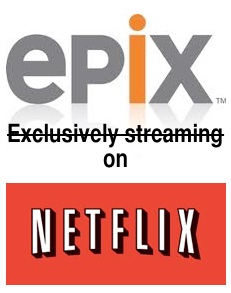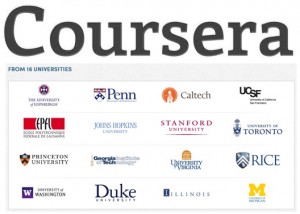
Greenpeace’s Social Shell Game, Zynga & Netflix Pain, Higher Ed. Disruption, GitHub Explained – The Week in Geek™ – July 31, 2012
Brief note for faculty using my book: Version 1.4 of “A Manager’s Guide to Harnessing Technology” should be out mid-August. For details, contact flatworldknowledge.com. The book will remain free online, low-cost in print and other versions (and for now you can find the current version, 1.3, here).
Greenpeace and Friends Punk Social and Mainstream Media with Shell Oil Spoof Corporate social media gaffes have become commonplace (McDonald’s McDStories and Kenneth Cole’s insensitive Arab Spring tweet being just two examples) and these often result in a sort of geek Schadenfreude with ridicule ricocheting around the online echo-chamber and mainstream media (for advice on avoiding gaffes, “Get S.M.A.R.T.”). But in a high-profile attempt to manipulate media, Greenpeace and the ‘culture jamming’ group the Yes Men, have used virility and the hair-trigger pile-on instinct of the Twitteratti to protest Shell.
Corporate social media gaffes have become commonplace (McDonald’s McDStories and Kenneth Cole’s insensitive Arab Spring tweet being just two examples) and these often result in a sort of geek Schadenfreude with ridicule ricocheting around the online echo-chamber and mainstream media (for advice on avoiding gaffes, “Get S.M.A.R.T.”). But in a high-profile attempt to manipulate media, Greenpeace and the ‘culture jamming’ group the Yes Men, have used virility and the hair-trigger pile-on instinct of the Twitteratti to protest Shell.
The elaborate campaign included several components: A fake social media campaign and bogus Shell Arctic Ready site featured a social ad-generator (with submissions gallery) inviting the community to caption ‘Arctic Ready’ images from Shell (sample: ‘Why go solar when you can drill polar‘). The Twitter handle @ShellIsPrepared, manned by a bogus Shell Social Media Team, offered up mock ham-handed responses such as the all caps ‘PLEASE DO NOT RETWEET ANY OF OUR TWEETS’. And co conspirators such as Occupy Seattle spread a YouTube video of a mock Shell PR event gone horribly wrong when a drink dispenser shaped like an oil rig malfunctions. Writes Forbes, “Greenpeace has apparently discovered that it’s far more effective to ram Shell online than it is to send Greenpeace boats out to protest or to handcuff themselves to drilling equipment in the snow.”
Here’s a key question, “is this a successful parody, protected by free speech, or a case of corporate identity theft?” The line is a murky one. U.S. courts often judge that a site would be considered a parody if it announces itself as a joke and isn’t clearly confused as something originating from the trademark holder. It’s not clear if the Shell protesters would pass this test. Several media outlets also appear to have fallen for the hoax, reporting it as an actual Shell PR disaster. Shell, so far, has not pressed charges in the case, so we might not see how the courts rule on this one.
Zynga Q2: “Just About Everything Went Wrong at Once” The one-time second-most-valuable video game firm in the country saw its market cap crater 40% after reporting worse-than-expected second quarter results. The NY Times offers a laundry list of problems: Zynga’s competitor to EA’s Sims, titled “The Ville”, had been delayed longer than expected; Mafia Wars II was panned; the once high-flying app “Draw Something” (acquired via Zynga’s roughly $200 million purchase of OMGPOP earlier this year) shed users, appearing to be more fad than franchise; and many classic titles saw their audience shrink. One big reason for the drop – Facebook tweaked its News Feed algorithm and launched its new App Center in a way that favors new titles over older ones. These changes can benefit Zynga as it comes out with new games. For example, Zynga’s “Bubble Safari” and the eventually-released “The Ville”, were both chart-toppers, with the latter breaking a record for installs of a new Facebook title. But the change also led to what several online referred to as the “Farmville Dustbowl”. The game moved from smash hit to out-of-sight and out-of-mindshare. Farmville represented 29% of Zynga’s recent quarter revenue, but went from 80 million players in March to just 20 million in July.
The one-time second-most-valuable video game firm in the country saw its market cap crater 40% after reporting worse-than-expected second quarter results. The NY Times offers a laundry list of problems: Zynga’s competitor to EA’s Sims, titled “The Ville”, had been delayed longer than expected; Mafia Wars II was panned; the once high-flying app “Draw Something” (acquired via Zynga’s roughly $200 million purchase of OMGPOP earlier this year) shed users, appearing to be more fad than franchise; and many classic titles saw their audience shrink. One big reason for the drop – Facebook tweaked its News Feed algorithm and launched its new App Center in a way that favors new titles over older ones. These changes can benefit Zynga as it comes out with new games. For example, Zynga’s “Bubble Safari” and the eventually-released “The Ville”, were both chart-toppers, with the latter breaking a record for installs of a new Facebook title. But the change also led to what several online referred to as the “Farmville Dustbowl”. The game moved from smash hit to out-of-sight and out-of-mindshare. Farmville represented 29% of Zynga’s recent quarter revenue, but went from 80 million players in March to just 20 million in July.
Also concerning – fewer users are paying up. The average daily amount Zynga takes in from the small number of users who pay for extra features in games dropped 10%, even while the overall number of users increased. The firm is still growing, revenue is up 19%, but that’s way below the 32% growth enjoyed the previous quarter. Zynga lost $22.8 million on quarterly revenue of $332 million (it would have been profitable save for a one-time charges on accounting for stock awards).
Look for the firm to place more of an emphasis on mobile games, advertising, and to aggressively explore online gambling. While the latter has not been approved in the US, the firm’s CEO, Mark Pincus, has stated that Zynga’s first real-money-gambling products could appear as early as 2013, pending always-sketchy prospects for government approval. Zynga’s real genius has been its prowess as a data-driven analytics company, and the ability to grow revenues by applying big-data insight. Caesars Entertainment (formerly Harrah’s – see mini-case in our textbook) has shown that data analysis can drive massive results in casino gaming. Zynga may have the skill and resources to pull in profits driven by Big Data, if they get the gambling green light. Another type of online gambling is sports betting, however there are now whispers about a change in laws in regards to any type of online sports betting service. Saying this though, there are countries such as Singapore and Lebanon where it is legal to bet on games like fantasy baseball or basketball. If gambling isn’t legal in certain countries, it isn’t worth breaking the law for, as there will be consequences.
Netflix Competitors About to Get in on Exclusives For years our students have studied Netflix‘s DVD business as an example of strategic, tech-driven disruption. But we also study the shift from DVD-atoms to streaming-bits as an entirely different business model, with different economics, legal regimes, competitors, partners, and other dynamics. Here’s more fuel for those analyzing the challenges that Netflix faces as it shifts to streaming.
For years our students have studied Netflix‘s DVD business as an example of strategic, tech-driven disruption. But we also study the shift from DVD-atoms to streaming-bits as an entirely different business model, with different economics, legal regimes, competitors, partners, and other dynamics. Here’s more fuel for those analyzing the challenges that Netflix faces as it shifts to streaming.
The firm previously enjoyed exclusive content from the Epix pay-TV channel, controlled by media conglomerate Viacom. This brought in blockbuster titles such as the latest Transformers movie, Captain America, and next year will include the Hunger Games and Avengers. But the exclusivity clause of the Epix deal sunsets at the end of August, and Netflix competitors are lining up to use Epix to make their streaming tails longer. One new competitor, Redbox Instant (which includes backing from Verizon), will launch next year with the complete catalog of Epix titles.
And there’s more bad news on the Netflix customer service front. For years the DVD-business Netflix ran was tops in customer satisfaction. But in streaming, Consumer Reports ranks NFLX sixth. Some quibble with Consumer Reports’ methodology, but there’s no way to see this as a good sign for a firm used to ranking best-in-class in nearly all other surveys.
Top Schools Move to Offer Free Courses Online Innovation is flourishing in online education, and one high-profile effort, the for-profit, Mountain View, CA-based Coursera, has attracted an international roster of world-class university partners and over $22 million in venture financing. Coursera was founded by Stanford Computer Science Profs Andrew Ng and Daphne Koller. Ng gained fame last fall when his online machine-learning class attracted an audience of over 100,000.
Innovation is flourishing in online education, and one high-profile effort, the for-profit, Mountain View, CA-based Coursera, has attracted an international roster of world-class university partners and over $22 million in venture financing. Coursera was founded by Stanford Computer Science Profs Andrew Ng and Daphne Koller. Ng gained fame last fall when his online machine-learning class attracted an audience of over 100,000.
Coursera has seen over 900,000 students enroll in the firm’s free online course offerings. Dubbed MOOCs by some (Massively Open Online Courses), the firm’s catalog will swell to 111 courses by year end, covering a surprisingly broad topic range (one title: “Equine Nutrition and Contraception“). I’m particularly excited about Penn professor Kevin Werbach’s upcoming Gamification class. These kinds of courses could be rocket-fuel for life-long learners, and a boon to anyone seeking to re-skill in an economy pummeled by consistent and accelerating change. Coursera even hosted a BBQ for students, attracting over 600 to a Bay-area meetup.
Coursera lectures are streamed online, and videos pause roughly every 10 minutes for a quiz assessing understanding. Institution partners include CalTech, Duke, Georgia Tech, Johns Hopkins, Princeton, Rice, UCSF, the University of Illinois – Urbana-Champaign, the University of Michigan, the University of Pennsylvania, the University of Washington, and the University of Virginia (where, notably, tensions over the school’s pace at adopting online ed. led to the ouster, then reinstatement of the school’s president). International partners include the University of Edinburgh, the University of Toronto, and the Swiss École Polytechnique Fédérale de Lausanne.
The schools develop courses while Coursera provides the platform. Right now this is a big, uncertain experiment, but you’ve got to hand it to top-tier schools that are willing to try things in such a public way. Right now no fees are exchanged between Coursera and partners, and all courses are free, but the firm is exploring multiple options for revenue sharing with schools. These could include student fees for premium content, certificates, or other certification, and providing data to recruiters on the hunt for a given talent pool.
Coursera is not the only high-profile player in the game. Other big online ed efforts include Udacity, started by Stanford Professor Sebastian Thrun; venture-backed 2tor, which runs online courses from USC, UNC, and others; and the non-profit edX launched by MIT and Harvard (and which recently attracted UC Berkeley as a partner).
Commentary: Hand-wringing about online ed. displacing four year college or graduate degrees is premature and I believe misplaced. The changes brought about by these platform should be welcomed. Classroom education, even when done well, can almost always be improved. Several studies show students learn better when ‘doing’ rather than in passive attendance mode. A reliable and excellent archive of online courses would allow universities to emphasize and leverage their inherent and tough-to-match advantage of bringing students and faculty together for deeper, more valuable interactions. Many talk of the classroom being flipped, with lectures delivered online and classes reserved for discussion, coaching, and group-enhanced problem-solving. Migrating to this model will take time with uneven results, and it’ll challenge faculty (and Ph.D. programs where faculty are trained) to craft an entirely new skillset. As a management professor and advisor to student entrepreneurs, I’m especially excited about how new approaches might allow our courses to accelerate student learning from theory to application. The cloud, the app store, 3D-printing, and other technologies have ushered in a golden age of collegiate entrepreneurship. While it’s naive to assume that all or even most of our students will (or even should) become conventional entrepreneurs, there are now a multitude of ways for students to more immediately apply what they learn in school. And these experiences can be combined with the residential magic that happens on campus, leveraging the outside-the-classroom learning opportunities that drive so many to conventional colleges in the first place. Done right, the model should accelerate critical thinking, deepen knowledge retention, and even create an environment where more of our students become true partners in research and knowledge creation. Sure the transition will be tough, but bring on the pain – the potential upside is massive and can have a huge impact that makes us all better.
College Degrees Designed by the Numbers In efforts that are cheered by some, and that creep out others, many schools are now extensively tracking students and automating advising in ways that borrow from Netflix, Amazon, and other personalization tools.
In efforts that are cheered by some, and that creep out others, many schools are now extensively tracking students and automating advising in ways that borrow from Netflix, Amazon, and other personalization tools.
Those at elite universities may be shocked to learn that, among students at US public four-year institutions, only 31% of students earn a degree within four years, and only 56% graduate within six years. Some claim technology can help improve these numbers. Arizona State, the nation’s largest public university, has credited an eAdvising system with improving retention rates from 77% to 84%. The ASU system monitors student major selection, course progress, makes sure classes are selected in sequence, and keep students on-time to graduate. ASU even offers a Facebook app that mines an enrollee’s profile and suggests friends among the student body of 77,000.
Tennesee’s Austin Peay State University has students interact with “a robot adviser” prior to course registration. The software examines a student’s profile, gathering data and assessing things such as interests and past academic performance, and then presents a list of “Course Suggestions for You“. Apparently the system guesses well and is persuasive – last fall 45% of scheduled classes were from the top 10 recommendations, and 57% from the top 15.
UNLV is among the schools using a system called Knewton, which will attempt to analyze data to identify “engagement metrics” and provide recommendations based on things such as the time of day when a student may best learn math, or what materials and delivery styles most engage a given student. Publishing giant Pearson has announced it is working with Knewton to create more adaptive learning content for students (think alternate formats such as video, audio, textbook, or Socratic-style quizzes).
Some call this the Moneyball approach to Higher education. While schools filled with data-driven scientists can appreciate the quest to find truth through numbers, The Chronicle of Higher Education points out a host of new tensions created by these sorts of systems. “What role does a professor play when an algorithm recommends the next lesson? If colleges can predict failure, should they steer students away from challenges? When paths are so tailored, do campuses cease to be places of exploration?“. Do these systems ruin the serendipity and broad exploration that many liberal arts institutions pride themselves on? And might these systems (for better or worse) migrate students to high-prospect professions rather than a pursuit of one’s passions? Critics of data-mining also point out that it is often done incorrectly, using bad data or making questionable assumptions on causality or on the impact of decisions based on algorithmic output.
Tech You Should Know: GitHub Explained Savvy coders and sharp tech students should already know GitHub, but the firm’s recent $100 million series A investment from Andreessen Horowitz (the only VC money it’s accepted so far) has caused others to take notice.
Savvy coders and sharp tech students should already know GitHub, but the firm’s recent $100 million series A investment from Andreessen Horowitz (the only VC money it’s accepted so far) has caused others to take notice.
GitHub started as a site where geeks could publish and share code. GitHub provides support for incorporating community-submitted project updates (version control). The network effect is in effect, and GitHub has become the top repository for open source code (or as Forbes puts it, GitHub is the “Library of Alexandria of code examples”). If you want to share with the largest community of active coders, GitHub is the place to go. The site has also moved beyond coding and supports all sorts of collaboration, from group work on PowerPoint presentations to movies made with Apple’s Final Cut software.
Users can create their own copies of existing projects, “forking” into separate versions for editing. If a user wishes to share their work, they can submit a “pull request” to a project’s owners, requesting that their changes be “merged” with the original project. Social features allow groups to discuss and comment on any proposed changes, creating what many call a “true meritocracy” based on “what you do, not who you know“. Importantly, member profiles list activity, building GitHub cred and creating a sort of on-line resume that speaks for itself (note to students – start contributing, even if it’s simply improving product documentation. Wanna dive in? Code School offers a free “Try Git” course). GitHub profiles also act as a switching cost that creates a barrier to entry for GitHub rivals. If someone has proven coding chops on GitHub, then they’re unlikely to go to other sites where they’ve got little cred. GitHub also offers additional social features such as feeds, following, and wikis for repositories.
The easy-to-use GitHub is based on Git, which itself is an open source project created by Linus Torvalds, the Father of Linux.
? ? ?
Faculty Friends: I know many schools bring in outside faculty for their short-term executive education programs. I’ve enjoyed being involved in such efforts (see my profile for a partial list of past consulting & exec. ed. work), and I’d welcome an opportunity to be considered for exec. ed. faculty or other opportunities outside of Boston College. Inquiries are most welcome!
